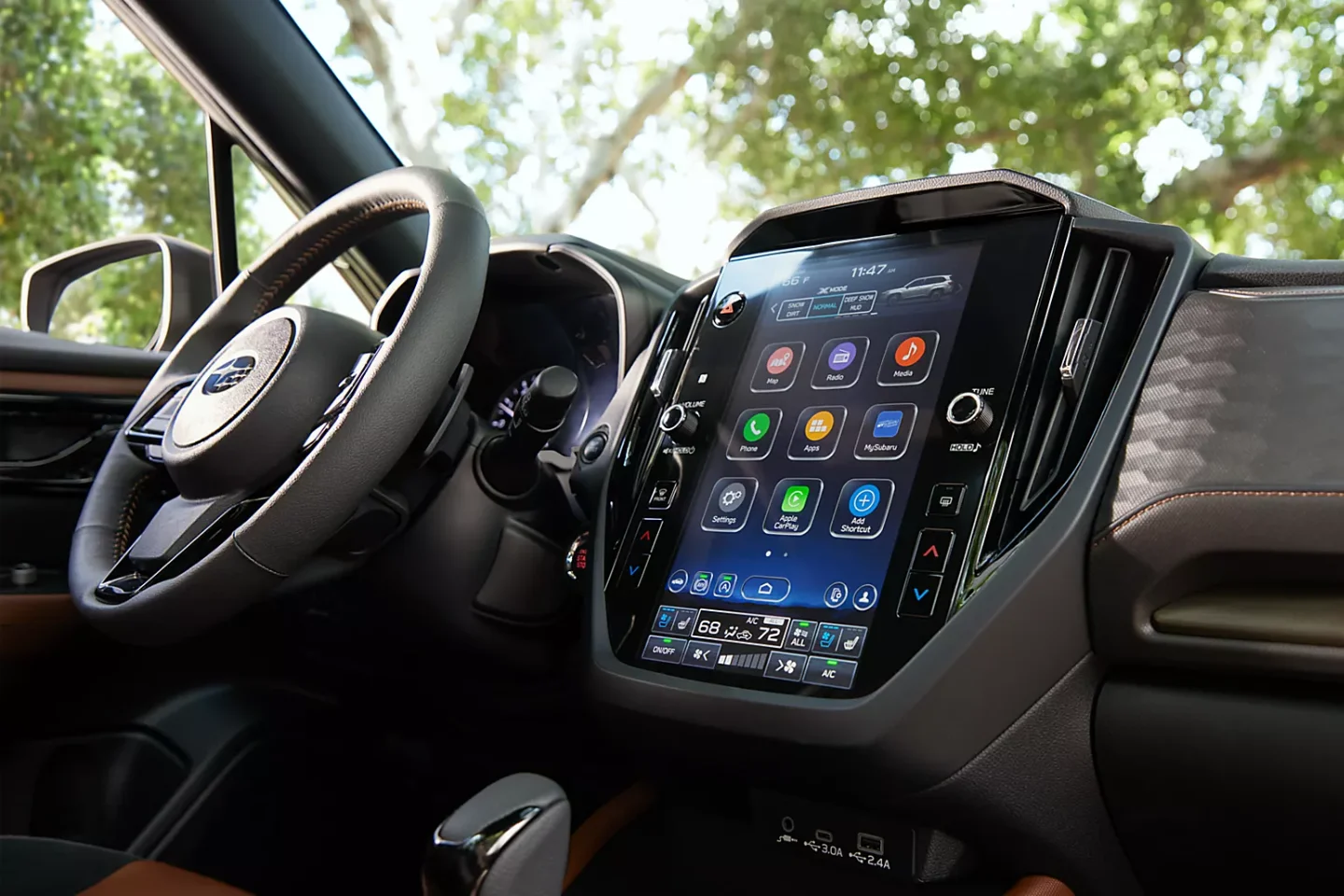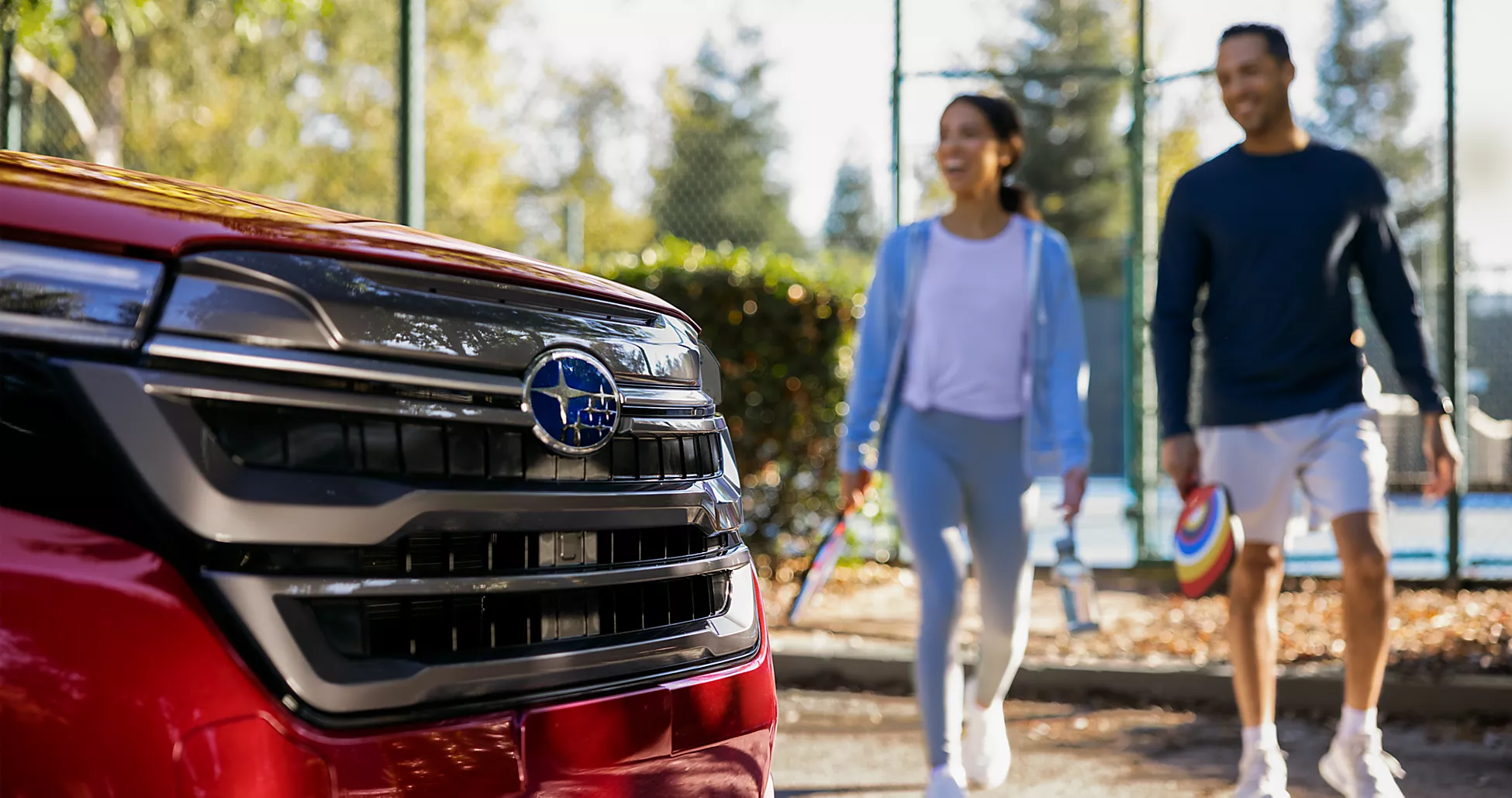2025 Subaru Forester vs. 2025 Honda CR-V – Compact SUV Showdown
Performance and Handling
Engine Power & Drivetrain
The 2025 Forester comes with a 2.5-liter SUBARU BOXER® 4-cylinder engine (182 hp, 176 lb-ft torque) paired with a smooth CVT automatic. While the CR-V's 1.5-liter turbo engine offers a bit more peak horsepower (190 hp), Subaru's symmetrical all-wheel drive (AWD) is standard on every Forester trim, constantly sending power to all four wheels for superior traction. In contrast, the CR-V is front-wheel drive by default - you'll have to pay extra for AWD. This means the Forester delivers confident grip in all weather conditions right out of the box, whereas the Honda makes AWD an add-on.
Handling
Thanks to the Forester's lower center of gravity from its flat BOXER engine layout, it feels balanced and stable around corners. Steering is responsive, and ride quality is comfortable yet controlled. The CR-V also handles well on pavement, but the Forester's standard AWD and suspension tuning inspire more confidence on loose or wet surfaces. When the road turns rough or slippery, the Forester's design really shines, maintaining stability where a FWD-based SUV might slip.
Fuel Efficiency and Driving Range
MPG Comparison
Despite its AWD system, the Forester manages impressive fuel economy - approximately 26 MPG city / 33 MPG highway (29 MPG combined). The 2025 CR-V's non-hybrid model is rated slightly higher at around 28 MPG city / 34 MPG highway (30 MPG combined). In real-world use, this difference is minor - roughly 1 MPG - and many drivers find Forester's balance of power and efficiency more than adequate. For those considering the CR-V Hybrid (with ~40 MPG city), note that Subaru's lineup will introduce a Forester Hybrid soon, but the standard Forester already delivers competitive mileage without the complexity of a hybrid system.
Driving Range
What the Forester might give up in a couple of MPG, it makes up in fuel tank size and range. Subaru provides a 16.6-gallon tank on the Forester, larger than the CR-V's 14.0-gallon tank. Combined with its efficient engine, the Forester can travel over 540 miles on a highway before refueling - roughly an hour more of driving than the CR-V's ~476-mile range on the highway. Fewer stops at the pump mean more time enjoying the drive.
Forester's Advantage
The bottom line - both SUVs are wallet-friendly at the gas pump, but the Forester's nearly identical MPG (despite standard AWD) and greater range give it a convenience edge for road trips. You'll have the efficiency for daily commutes and the capacity to go the extra mile on adventures.

Safety Features and Ratings
Safety Technology
Subaru has built a sterling reputation for safety, and the 2025 Forester upholds that tradition. Every Forester is equipped with EyeSight® Driver Assist Technology, a suite of advanced safety features including forward collision warning with automatic emergency braking, lane keep assist, and adaptive cruise control. Subaru goes a step further with available DriverFocus® Distraction Mitigation, which uses an interior camera to monitor driver alertness - a unique feature not found in the CR-V.
The Honda CR-V offers its own Honda Sensing® suite (collision mitigation braking, lane-keeping assist, adaptive cruise, etc.) standard on all trims, and both vehicles provide blind-spot monitoring and rear cross-traffic alerts on upper trims. However, Subaru's long-term commitment to safety innovation gives the Forester an edge in peace of mind.
Safety Ratings
The Forester has been a Top Safety Pick by the IIHS for 17 consecutive years (2007-2023), more than any other small SUV. That's a testament to Subaru's engineering and safety philosophy. The 2025 Forester continues this legacy, built on the enhanced Subaru Global Platform with an even stiffer structure for crash protection. The CR-V also earns high safety marks, but it can't match the Forester's unmatched streak of safety awards and Subaru's confidence from decades of proven crash test performance.


Interior Space and Cargo Capacity
Passenger Comfort
Step inside the Forester, and you'll immediately notice the airy, open feel. The Forester's cabin is extremely roomy for a compact SUV - it offers generous headroom (over 41 inches up front, 39+ inches in the rear) and legroom (43.3 inches front, 39.4 rear), which bests the CR-V's rear-seat legroom slightly and significantly exceeds it in front-seat space.
Cargo Space
Both SUVs are versatile haulers, with ample cargo room for groceries, luggage, and adventure gear. The Honda CR-V does hold a bit more behind the second row - about 39.3 cubic feet versus the Forester's roughly 30 cubic feet with all seats up. However, the Forester makes smart use of its space, with a lower lift-over height and integrated roof rails standard on most trims.
Technology and Infotainment
Touchscreens & Connectivity
The 2025 Forester delivers a tech-rich experience without overwhelming the driver. Higher Forester trims feature an 11.6-inch vertical touchscreen with the latest SUBARU STARLINK® infotainment system. The CR-V offers a 7-inch touchscreen on lower trims and a 9-inch unit on top trims. While both systems support Apple CarPlay® and Android Auto™, the Forester's larger screen and mix of touch and physical controls provide a more user-friendly interface.
Driver Aids & Convenience Tech
Both vehicles include advanced driver-assistance tech, such as adaptive cruise control and lane centering. The Forester offers a 360-degree Surround View Monitor, giving you a bird's-eye view when parking - a feature not available in the CR-V.

Off-Road Capability and All-Weather Performance
Ground Clearance & Design
When the pavement ends, the Forester truly pulls ahead. Every 2025 Forester boasts 8.7 inches of ground clearance, significantly higher than the CR-V's 8.2 inches (on its AWD models). That extra half-inch can be the difference between gliding over a rutted trail or scraping the underside.
X-MODE® and Off-Road Tech
All Forester trims (except base) come with X-MODE, a selectable off-road driving mode that optimizes the AWD system, transmission, and traction control for low-friction conditions like mud, snow, or steep hills. The Honda CR-V does not offer an equivalent system.
Forester Wilderness vs. No Honda Equivalent
For the ultimate adventurer, Subaru offers the Forester Wilderness model - a trim specifically made for off-road enthusiasts. The Wilderness upgrades the Forester with 9.2 inches of ground clearance, all-terrain tires, skid plates, and dual-function X-MODE. Honda's CR-V lineup has nothing comparable.
Conclusion: Forester Leads the Way

After examining performance, efficiency, safety, space, technology, and off-road prowess, it's clear the 2025 Subaru Forester comes out on top as the more well-rounded and capable compact SUV.




